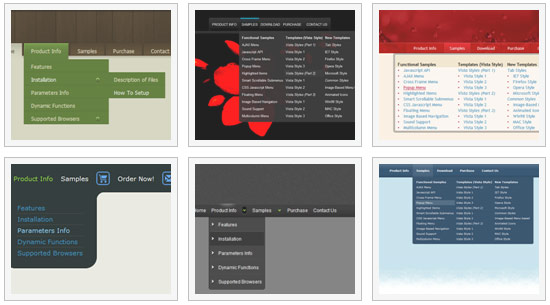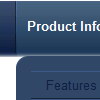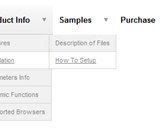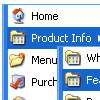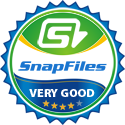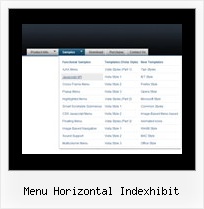Recent Questions
Q: I have tried changing every menu variable I can see to make the actual iconbackground a different color than the menu items background with no success.Is this possible?
I would like the icon background to change with the alternating colors byrow .. and I know how to do this. but when I do it .. all the menus andsubmenus also change and I would like their background to stay white.
A: Yes, it's possible.
You should use an individual style for icon item, please see
deluxe-menu.com/individual-styles-sample.html
deluxe-menu.com/individual-submenu-styles-info.html
Q: I recently downloaded the trial version of Deluxe Tuner to create a pop-up menu for my website. The menu looks amazing, and I am convinced from the trial that this is a product that I could definitely use.
However, I'm having so much trouble putting my horizontal drop down menu into my Dreamweaver html. I've followed the instructions given, but my menu still does not appear. What am I doing wrong?
Thanks, and I'm looking forward to figuring this out, because if it's an easy program to use, I will for sure be buying the full version!!
A: Check that you've copied "Homedir/" folder with all menus files and data.js file into the same folder withHome page.html file.
Notice also that in the Design mode your drop down menu may displayincorrectly. It is normal. You should view your page in browser preview.
Q: I try to use the javascript menu popups to show an image; then when the mouse is over the image I dynamically generate a panel of http links. It works perfectly, but the problem is that I would like to do the same with several images (for instance 2) and different links : I'm not able to do that, whether I change the value of menuItems var or not, I display the same link values on both images (it seems menuItems is a global var and can be set only once).
Have you heard about this problem and could you give me a solution (this is a bit urgent, I have sold this solution to my customers) ?
A: See how you should call dm_popup() functions:
<img src="../../../../fileadmin/img/flag_de.gif" width="50" onMouseOver="return dm_popup(0, 2000, event);" style="cursor: pointer;">
// 0 - is ID of the first menu
....
<img src="../../../../fileadmin/img/flag_fr.gif" width="50" onMouseOver="return dm_popup(1, 2000, event);" style="cursor: pointer;">
// 1 - is ID of the second menu
// 2 - is ID of the third menu
... and so on.
Q: I am afraid I am still having difficulties.
Key issue is fine, no problems there. However, I cannot seem to make this NOT showing me a window open example when the page opens. I just want to have popups upon click. What I want is to be able to create links, within the same page, that will popup windows of different content and size, all upon click (not upon page loading.
What am I doing wrong here?
In the site I have the following:
1. A www.domain.gr/deluxe-popup-window.files folder
2. A http://www.domain.gr/deluxe-popup-window.js script
3. and my test page creating the popups
So, in my sample page:
1. I do NOT want to have the 1st popup which loads automatically as the page opens
2. I want to have the 2 samples shown there, Sample 2 and Sample 3.
3. These 2 samples must show windows of different width and height.
Please help me here.
Looking forward to your answer.
A: Delete openAfter= text from the deluxePopupWindow.attachToEvent()function in the following file:
http://www.domain.gr/deluxe-popup-window.js
In that case popup window won't show till you click on the link.
deluxePopupWindow.attachToEvent(win,',,,,,')

